FN Reflex XL NMS 3.8" 9mm 15rd/18rd Pistol, BLK/BLK – 66-101759 For Sale
$599.00
The FN Reflex XL NMS 3.8″ 9mm Pistol (model 66-101759) in black is designed to meet modern shooters’ needs with its optic-ready slide for easy red-dot sight attachment, enhancing precision and speed. It features front orange and rear double-dot night sights for effective target acquisition in low light conditions and includes a slim-line rail mount for added tactical accessories like lights or lasers. Its reversible magazine release accommodates both left- and right-handed users, and it comes with two magazine options: a 15-round for everyday use and an 18-round extended version for greater capacity. This versatility makes it suitable for a diverse range of applications and scenarios.
What is the difference between FN Reflex and FN Reflex XL?
The FN Reflex and FN Reflex XL are both compact pistols designed by FN Herstal, but they differ mainly in size and capacity.
1. **Size**: The Reflex XL is larger than the standard Reflex. This generally means it will have a longer slide and barrel, making it potentially more accurate at longer distances due to the extended sight radius.
2. **Capacity**: The Reflex XL typically has a higher magazine capacity compared to the standard Reflex, allowing for more rounds to be carried without reloading.
3. **Ergonomics**: Due to the larger size, the Reflex XL may have a slightly different grip, potentially offering a more comfortable hold for those with larger hands.
These differences cater to slightly different uses: the standard Reflex is more suitable for concealed carry due to its compact nature, while the Reflex XL might be favored for situations where size and capacity can be optimized, such as target shooting or home defense.
Is the FN reflex easy to rack?
Yes, the FN Reflex is generally considered to be easy to rack. The design typically includes features that enhance the ease of racking, such as a textured slide and a user-friendly grip. However, individual experiences may vary based on hand strength and familiarity with the firearm.
What is the trigger pull on the FN reflex?
The trigger pull on the FN Reflex is approximately 5 to 7 pounds.
How much is the FN Reflex XL?
The FN Reflex™ 9mm pistol, including the Reflex XL model, generally retails around $600 to $700, but prices can vary based on the retailer, location, and availability. For the most accurate and current pricing, it’s best to check with authorized FN dealers or online firearm retailers.
Is the FN reflex a good gun?
The FN Reflex is generally regarded as a solid firearm, especially among those looking for a compact, reliable option for concealed carry or personal defense. Manufactured by FN Herstal, it often receives positive reviews for its build quality, ergonomics, and accuracy. However, whether it’s a “good” gun can vary based on personal preference, intended use, and individual needs. It’s important to handle and, if possible, test the firearm yourself to determine if it meets your specific criteria.
What is the difference between M1 and M2 reflex?
The difference between M1 and M2 reflexes lies primarily in their latency, neural pathways, and involvement of different components of the nervous system.
1. **M1 Reflex (Monosynaptic Stretch Reflex):**
– **Latency:** Very short, around 30-50 milliseconds.
– **Neural Pathway:** Monosynaptic, meaning it involves a direct link between the sensory and motor neurons in the spinal cord.
– **Description:** It’s a quick and direct response to muscle stretch, such as the knee-jerk reaction. Sensory input from muscle spindles is transmitted directly to the spinal motoneurons, causing a rapid and immediate muscle contraction.
– **Example:** Patellar reflex (knee-jerk).
2. **M2 Reflex (Polysynaptic or Long-Loop Reflex):**
– **Latency:** Longer, around 50-100 milliseconds or more.
– **Neural Pathway:** Polysynaptic, involving interneurons and often higher centers of the brain, such as the motor cortex.
– **Description:** It’s more complex and may involve modulation and integration of additional sensory information. It adjusts motor output and is part of maintaining posture and balance.
– **Example:** The response to regain equilibrium after being destabilized might involve M2 reflexes.
In summary, M1 reflexes are faster and more direct, while M2 reflexes are slower but involve complex processing and integration for adaptive and fine-tuned responses.
Can the FN reflex handle +P ammo?
Yes, the FN Reflex is designed to handle +P ammunition. It’s always important to refer to the manufacturer’s guidelines or the owner’s manual to ensure that your specific firearm model can safely use +P ammo. Regular use of +P ammunition can increase wear and tear on the firearm, so it’s typically recommended for occasional use rather than constant practice.
What gun has the least kickback?
The gun with the least kickback would generally be a low-caliber firearm, such as a .22 caliber rifle or pistol. These guns use small cartridges, resulting in minimal recoil or kickback. Additionally, air guns or pellet guns typically have negligible recoil due to the lack of explosive gunpowder. Keep in mind that the design and build of the firearm, such as weight and recoil mitigation features (e.g., muzzle brakes or recoil pads), also play a significant role in reducing felt recoil.
What is Israeli carry?
Israeli carry refers to the practice of carrying a semi-automatic pistol with a loaded magazine but with no round in the chamber. In this condition, the firearm requires the user to rack the slide to chamber a round before it can be fired. This method is often associated with the Israeli military and certain law enforcement agencies, and is believed to enhance safety by reducing the likelihood of accidental discharges. This style of carrying ensures that the weapon is not “combat ready” until the slide is racked, which is a deliberate action taken by the user.
What is the problem with the FN reflex?
The FN Reflex, a bullpup-style rifle developed by FN Herstal, is generally well-regarded for its innovation and compact design. However, some common issues reported with bullpup designs, which could apply to the FN Reflex as well, include:
1. **Trigger Feel**: Bullpup rifles often have longer linkages due to their design, potentially leading to a less crisp trigger feel compared to traditional rifles.
2. **Ejection Concerns**: Bullpup configurations can sometimes cause problems with spent shell ejections hitting left-handed shooters, although modern designs often try to mitigate this.
3. **Balance and Handling**: While the bullpup design is intended to offer better maneuverability, some users find the weight distribution to be tail-heavy, affecting handling.
4. **Ergonomics**: The unconventional layout of bullpup rifles can be awkward for shooters accustomed to traditional rifles, particularly in accessing the magazine and operating some controls.
5. **Aftermarket Compatibility**: Accessories and modifications may be less available compared to more traditional rifle designs.
It’s important to note that these issues can vary in significance based on personal preference and specific model iterations.
Can you put a red dot on a FN reflex?
Yes, you can put a red dot sight on an FN Reflex. The FN Reflex is typically designed with an optics-ready slide, which means it has the capability to mount various red dot sights. Ensure you select a red dot sight that is compatible with the mounting system of the FN Reflex and follow the manufacturer’s instructions for installation.
Can you dry fire the FN reflex?
Yes, you can dry fire the FN Reflex. Dry firing is generally safe for modern centerfire firearms, including the FN Reflex. However, it’s always a good idea to consult the firearm’s manual or contact the manufacturer for specific guidance related to dry firing.
What is the difference between long reflex and short reflex digestive system?
The difference between long reflexes and short reflexes in the digestive system primarily lies in the involvement of the central nervous system and the pathways they follow:
1. **Long Reflexes**:
– **Pathway**: These reflexes involve the central nervous system (CNS), including the brain and spinal cord.
– **Components**: They are mediated by extrinsic nervous systems, which means they use autonomic nerves to communicate between the digestive tract and the CNS.
– **Function**: Long reflexes typically control digestive activities over longer distances or coordinate different regions of the digestive tract. They are responsible for regulating responses such as hunger, sight, and smell of food, which influence the digestive system.
– **Example**: The sight or smell of food triggering salivation or changes in gastric activity.
2. **Short Reflexes**:
– **Pathway**: These reflexes occur entirely within the enteric nervous system (ENS) and do not require input from the CNS.
– **Components**: Short reflexes are intrinsic to the gastrointestinal system and rely on the local network of neurons in the gut wall.
– **Function**: They primarily control localized activities such as peristalsis (local movement of the gut) and secretion, which directly affect small, specific segments of the digestive tract.
– **Example**: The stretching of the stomach or intestine wall triggering muscle contractions in that area to help mix and propel contents.
Overall, long reflexes coordinate activities with the external environment and other body systems, while short reflexes manage direct and immediate control of digestive processes.
What is the difference between H reflex and F response?
The H reflex and the F response are both neurophysiological responses used to assess the integrity of the peripheral nervous system, but they have different mechanisms and uses:
1. **H Reflex:**
– **Mechanism:** The H reflex is an electrically evoked response analogous to the monosynaptic stretch reflex (such as the knee-jerk reflex). It is elicited by stimulating a sensory nerve, typically the tibial nerve, and recording the resulting motor response in the muscle. It primarily assesses the integrity of the sensory and motor components of the reflex arc.
– **Use:** The H reflex is used to evaluate the S1 nerve root and the proximal conduction of the sensory and motor nerves. It’s useful in diagnosing nerve root compression, radiculopathy, and peripheral neuropathy.
2. **F Response:**
– **Mechanism:** The F response is a late motor response triggered by supramaximal electrical stimulation of a motor nerve. It represents the backfiring of antidromically activated motor neurons, traveling up to the spinal cord and then down again to the muscle.
– **Use:** The F response is used to assess the conduction of motor pathways, especially in the proximal segments and the spinal cord. It is often used to evaluate conditions like peripheral neuropathy, Guillain-Barré syndrome, and other demyelinating diseases.
**Key Differences:**
– The H reflex focuses on analyzing the reflex arc through sensory and motor nerve pathways, while the F response primarily examines the motor neuron’s ability to conduct signals through the spinal cord.
– The H reflex involves submaximal stimulation of sensory nerves and is more akin to a natural reflex, whereas the F response is produced by stimulating motor nerves with a strong, supramaximal electrical pulse.
– The H reflex is often easier to elicit in lower limbs (e.g., soleus muscle), whereas the F response can be recorded from various limb muscles.
Both responses are complementary and provide valuable information in diagnosing and assessing neuromuscular disorders.
What is the difference between FN and FN America?
FN Herstal, often referred to simply as FN, is a Belgian firearms manufacturer known for producing a wide range of firearms, including military, law enforcement, and civilian weapons. The company has a long history and is recognized globally for its quality and innovation.
FN America, on the other hand, is a U.S.-based subsidiary of FN Herstal. It is responsible for manufacturing, selling, and servicing FN products in the United States market. FN America produces a variety of firearms in the U.S., often catering to the specific needs of American law enforcement, military, and civilian customers.
The main difference between them lies in their geographical location and specific market focus: FN Herstal is the parent company based in Belgium, while FN America is its American subsidiary dealing with operations in the United States.
| Model | Reflex XL |
|---|---|
| Action | Single Action |
| Overall Length | 6.75 inches |
| Sights | Optics-ready slide, front orange night sight, rear double-dot night sights |
| Frame Material | Polymer frame with black PVD finish |
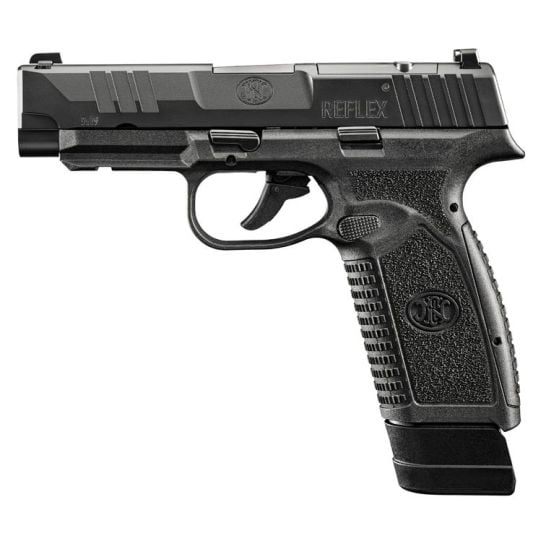
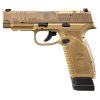
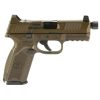
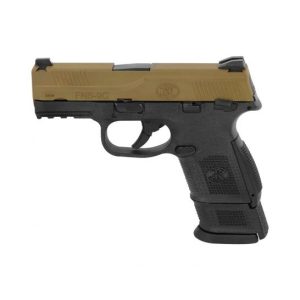
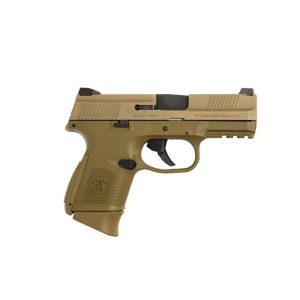

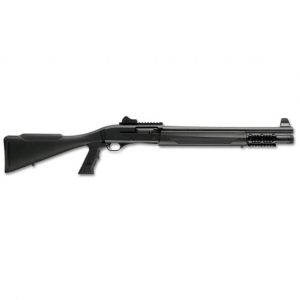
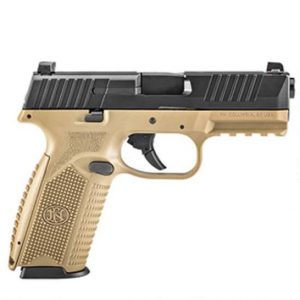
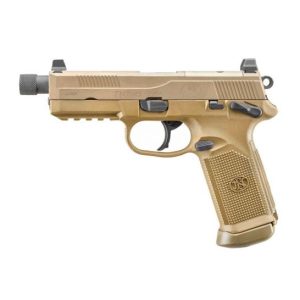
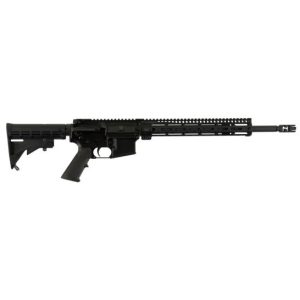
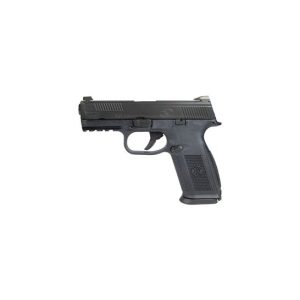
Reviews
There are no reviews yet.